Three types of flowers of the same name from the Begonia family and the Begoniaceae family - Schmidt, Lanchiana and Graceful - became the progenitors of a complex hybrid - evergreen begonia, planting and care of which are quite complicated and require sufficient experience when grown at home. This is a very bright houseplant - a native of tropical lands.
Therefore, its name reflects reality, since it can really bloom all year long, taking small breaks. To date, the hybridization of this species does not stop there, more than 600 varieties have already been bred. Among them there are those that are grown for planting on flower beds, that is, they are used as annuals. But enough room options. Most hybrids are bred by breeders from France and Denmark.
Content
Characteristics of evergreen begonia and species diversity
The evergreen begonia bush does not exceed 40 cm and is classified as a grassy shrub. The stalk is bare, branched. Leaves are smooth, without edge, with central venation, simple shape. The flowers are simple or double, medium-sized, collected in inflorescences, coming from deciduous sinuses, red, white or pink. It is interesting that begonia flowers are female and male: the first has five petals, the second has four.
Everblooming begonias can be divided into groups. Low, 15–20 cm in height, medium –– 20–30 cm, tall up to 50 cm. Consider several varieties for example. The most popular ever flowering species:
- Bicol - a low bush, does not exceed 13 cm. The leaves are bright green, smooth. White flowers with a pink border, collected in inflorescences of 4 pcs. Often used in group landings.

Bicol - Albert Martin - a 15-centimeter bush, the leaves are green with a red border. The carmine shade of flowers collected in bunches of 9 pcs. Blooms very profusely. At the same time on one plant can be 55 pcs. flowers. It is very appreciated by landscape designers, it is used for the decor of terraces and balconies.
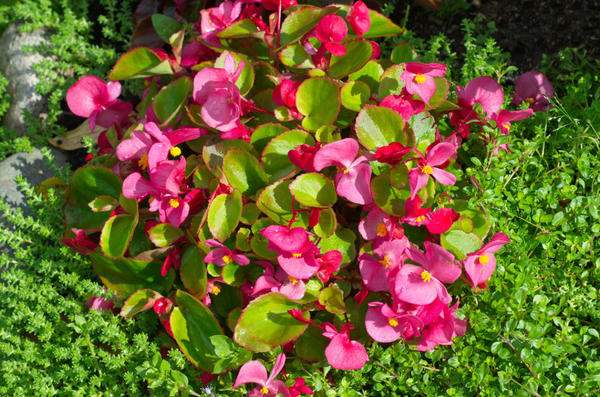
Albert Martin - Bella is 140 simultaneously blooming red or dark pink flowers. The height of the stems is up to 20 cm. Leaves with a wavy border, saturated green.

Bella - Carmen - medium bush height (up to 25 cm) with brown-burgundy smooth leaves. Pink flowers, 3 cm in diameter, collected in 6 pieces. in groups.
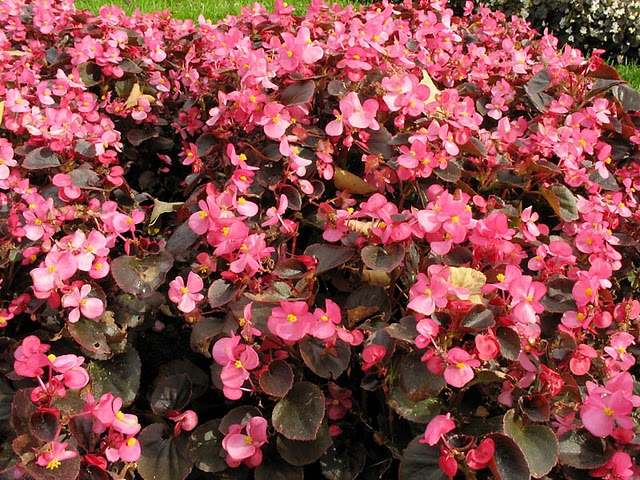
Carmen - Othello is an abundantly flowering plant up to 25 cm tall. Green rounded leaves, simple scarlet flowers.
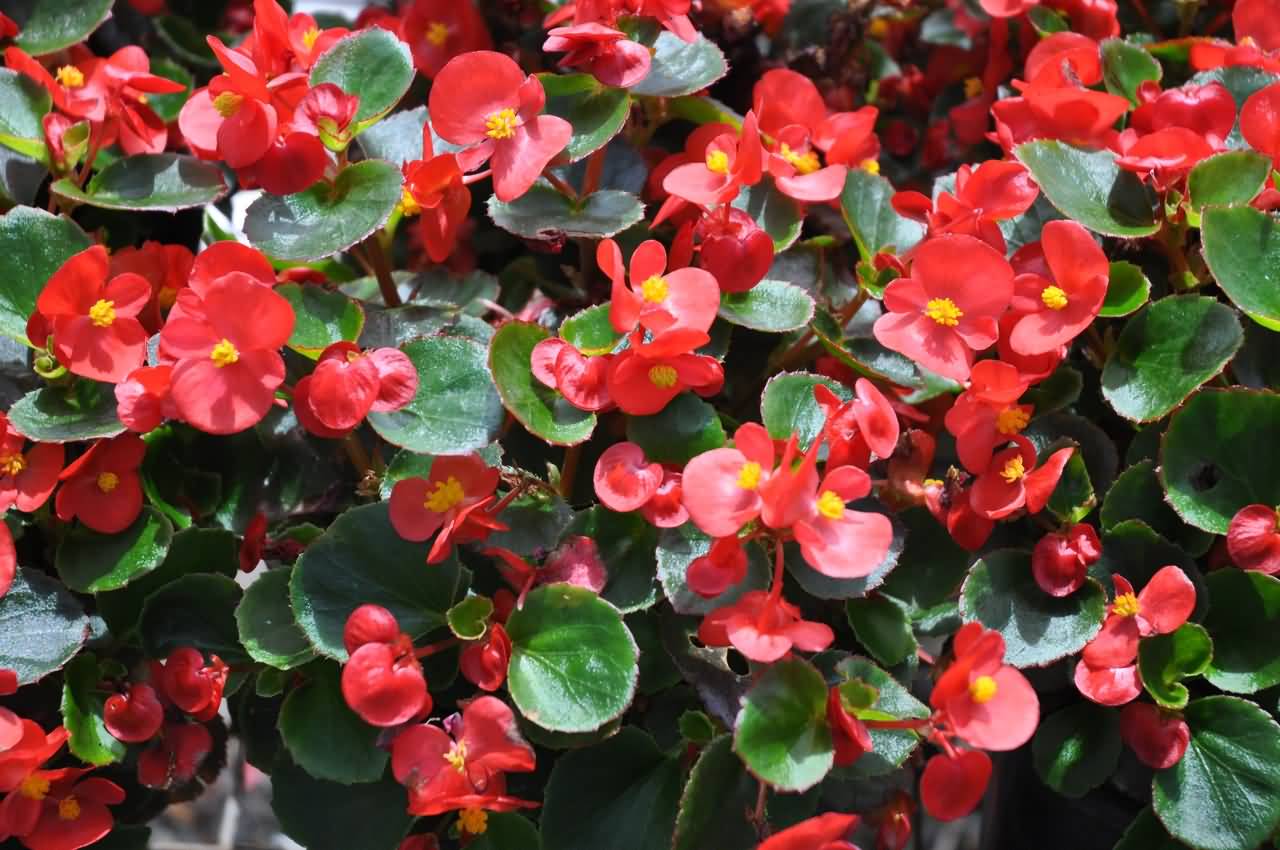
Othello - Alba is a sprawling bush up to 40 cm with large green leaves. White flowers, collected in inflorescences of 12 pcs.
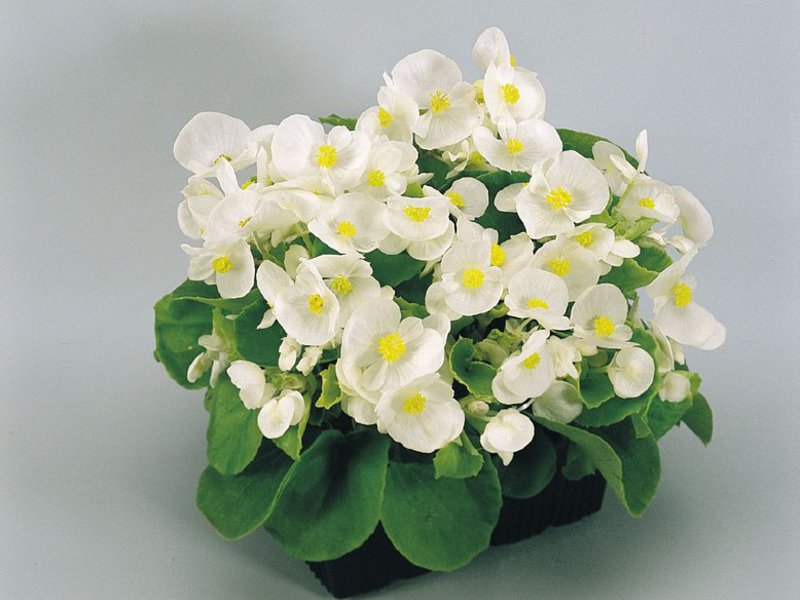
Alba - In addition, there are entire series of hybrids, among which are such popular as Cocktail, Eureka, Olimpia, Queen, Ambassador, Party, Victory, Vision.
Secrets and features of home care
Although most of the cultivated varieties are adapted to our climate, it is impossible to obtain high-quality flowering without giving the plant proper attention and care. To do this, study its requirements.
Lighting
A flowering plant needs a lot of light. But since direct rays can cause burns, the southern windows will not work, except if you use a screen or curtain there. The northern windows are also not perfect, in this case, additional illumination is needed to get a 16-hour light day.
Temperature and watering
Evergreen begonia hybrids do not need tropical heat, like their ancestors, and feel good at 20-25 degrees. Moreover, such conditions should be all year: the flower loves stability as a condition for constant flowering.
But since in the summer it is hotter than what is required, and in the winter in the heated room there may be cold window sills, the plant gets stress. Here we are talking about saving his life.
If it is impossible to ensure even climatic indicators in winter, begonias need to arrange a rest period by placing it in cool - about 12-15 degrees. But not lower, to prevent her death.
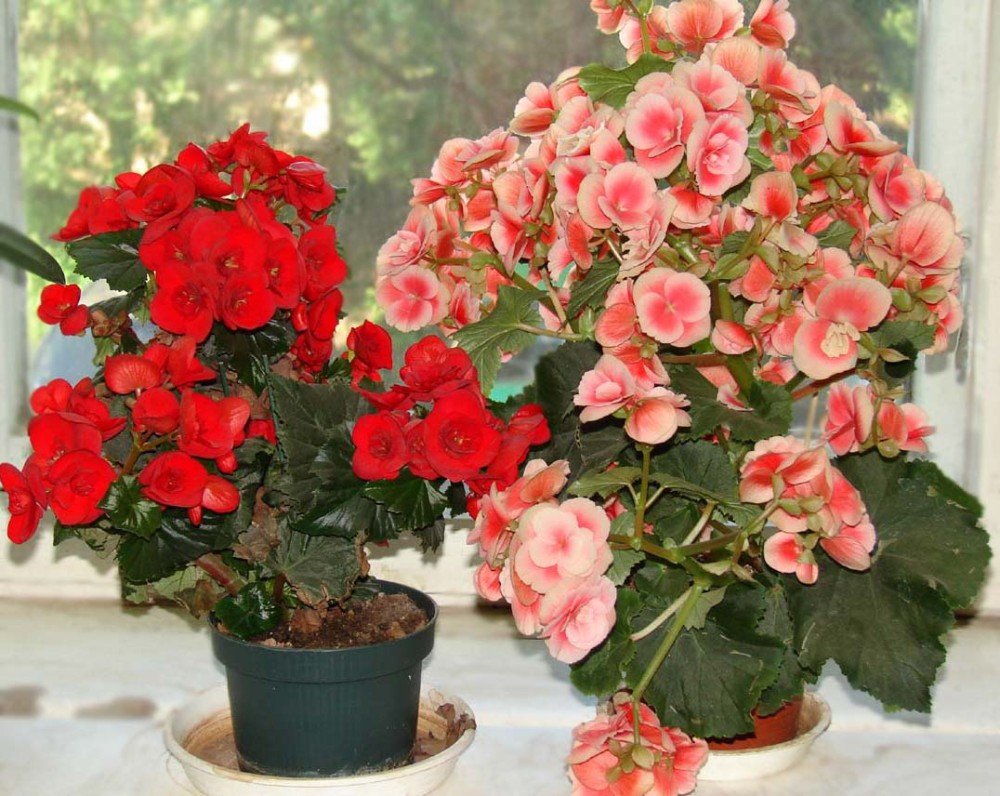
In irrigation, the most important thing is to maintain a balance so as not to dry the roots and to prevent overflow and stagnation of water. The soil should dry 1-2 cm, water the plant twice a week at the optimum air temperature, and in the heat every other day. In winter, especially if it is a dormant period, reduce the frequency to once a week.
Emphasis on water quality: purified, ideally melt or rain, and warm.
Top dressing
Fertilizers are especially needed for flowering plants. After the winter, when begonia begins the vegetation, it must be supported by nitrogen top dressing. When buds appear, nitrogen must be removed by replacing it with phosphorus and potassium.
Frequency of application - 1 time in 7-10 days. Necessarily with a portion of water so that the fertilizer with its high concentration does not burn the roots. If the plant is given a dormant period, then at this time top dressing should be stopped.
Planting, transplanting and propagating begonias at home
After getting used to a new place, the purchased plant should be transplanted into a new soil, as it is usually sold in a transport, without nutrients. You can buy a ready-made earth mixture - “for begonias”, or make it yourself from sheet earth, peat, sand, agroperlite and vermiculite.
The main thing is that the soil is loose, breathable and moisture permeable. It is also important to put enough pebbles or expanded clay on the bottom of the pot for drainage. Also a sand cushion "pillow" works well.
Remove the flower from the old soil, slightly stir up the earthen lump, but without effort, so as not to break the fragile roots. After that, insert into a new pot and sprinkle new earth on the sides. Begonia is not often needed for transplantation; she loves the cramped roots, so the pot will need to be increased not very much.
Begonia is one of the easiest flowers to propagate. When it grows old, and its flowering will be sparse and short-lived, it can be rejuvenated by dividing the roots into fragments and planting in different pots.
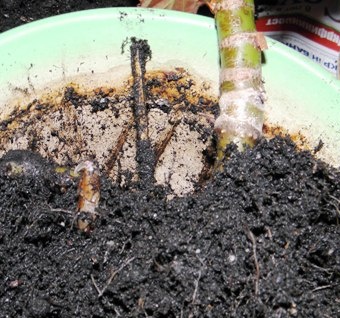
Seed propagation
By seeds from professional breeders (it makes no sense to take others, hybrids do not propagate by seed, if they have double flowers) it is not difficult to propagate a favorite begonia variety. In the tray you need to pour a loose substrate, half consisting of sand, sprinkle seeds on top of it, without covering it with soil on top. Cover the dish with transparent material and place in a warm, bright place for germination. Moisturize by spraying until sprouts appear.
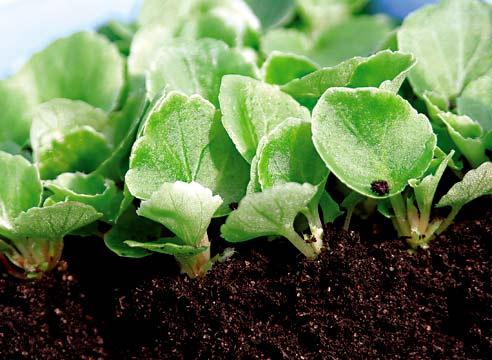
After biting, remove the cover and wait for 3-4 leaves to transplant into separate pots and take care of the flower, as an adult.
Under favorable conditions, begonia ever flowering can bloom in a few months.
Cuttings
The vegetative method allows you to get an identical instance of the variety. To do this, you can take the stem and divide it into cuttings of 10 cm, so that each has 3-4 sinuses with buds and leaves. They need to be put in water, adding a rooting agent there.
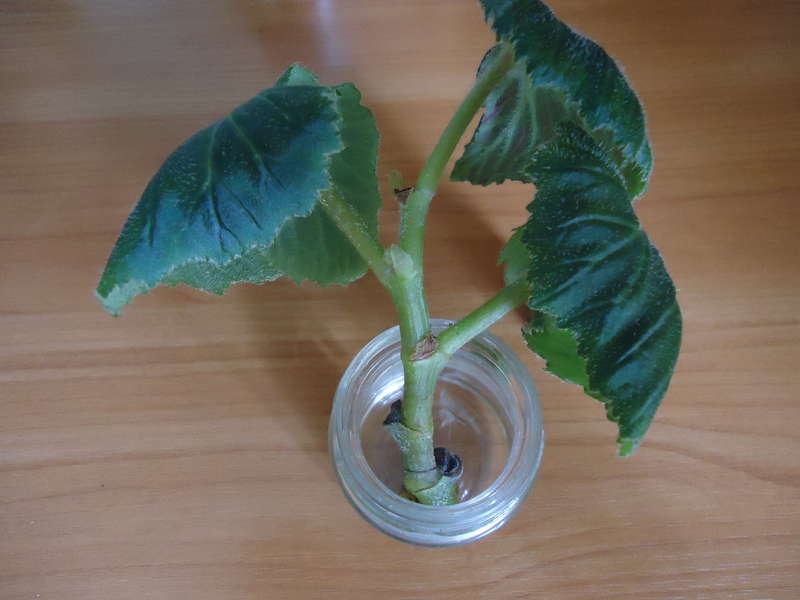
It can be any ready-made preparation of the “Kornevin” type, or, for example, honey - it contributes well to the formation of roots.
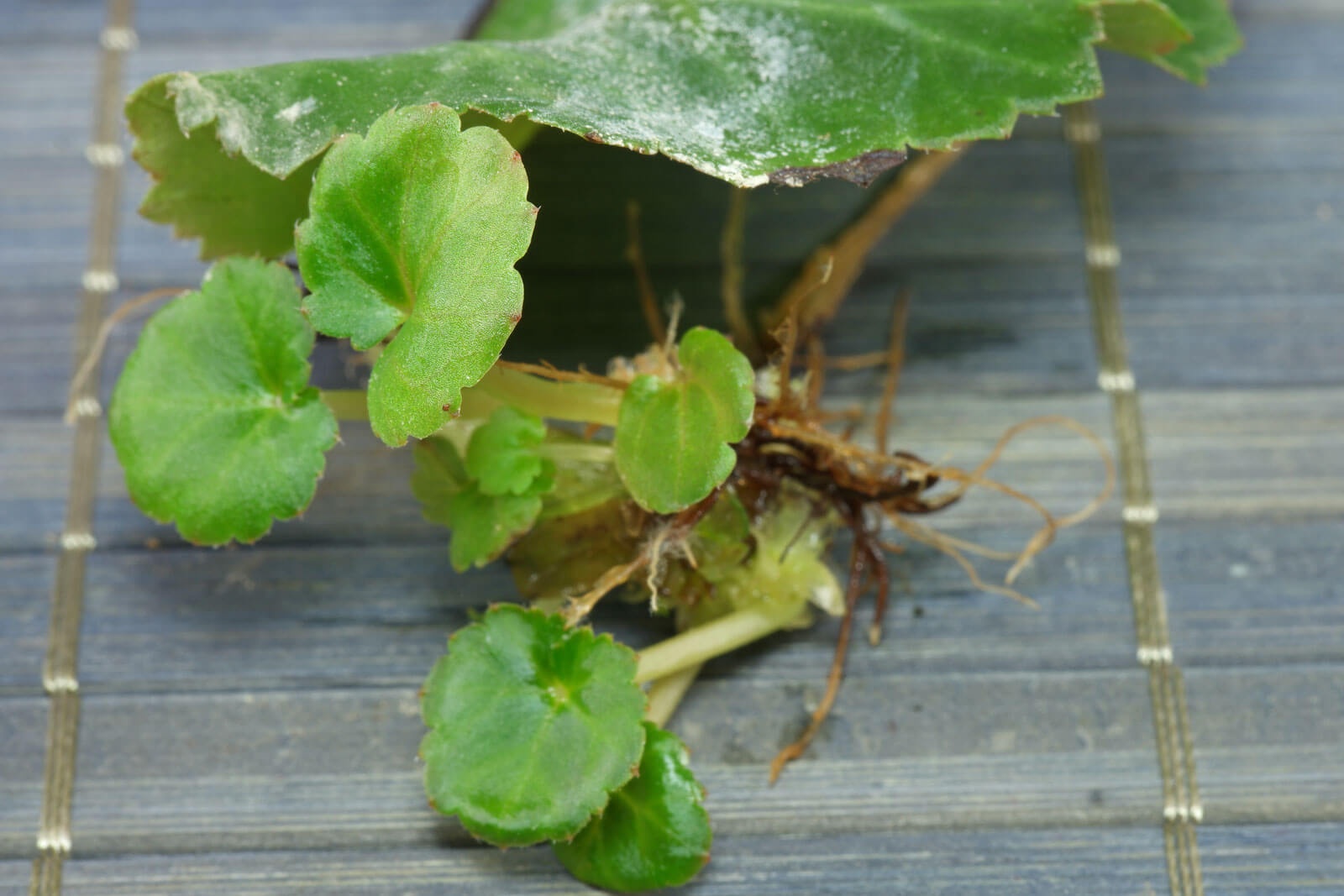
After the release of the white roots, the cuttings should be stuck in loose soil and grown until the leaves appear. When the flower grows, it is necessary to transplant it into a pot.
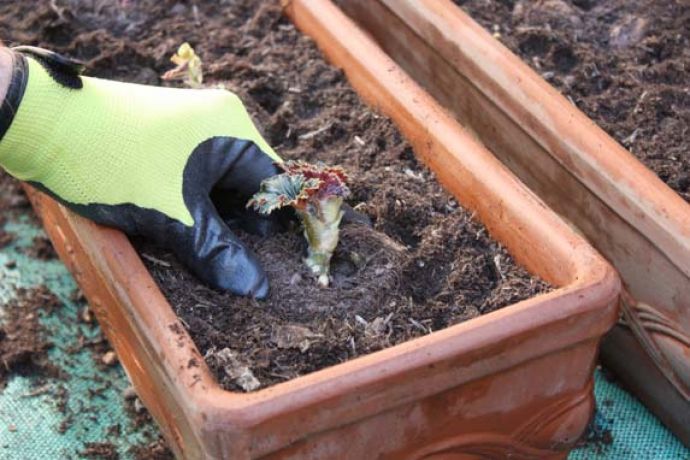
Sliced cuttings can not be kept in water, but powdered with activated charcoal and immediately planted. Only on top should they make a cap of a transparent material, bag or glass jar. Ventilate the greenhouse periodically by opening it. It is necessary to remove it after rooting, and the signal for this will be new small leaves.
With a lack of planting material, even a leaf can serve as a handle. It is necessary to scratch the veins from the bottom of the sheet and lay on wet sand, fixing these fragments. To build a greenhouse on top. After some time, new leaves will appear, and begonia can be transplanted.
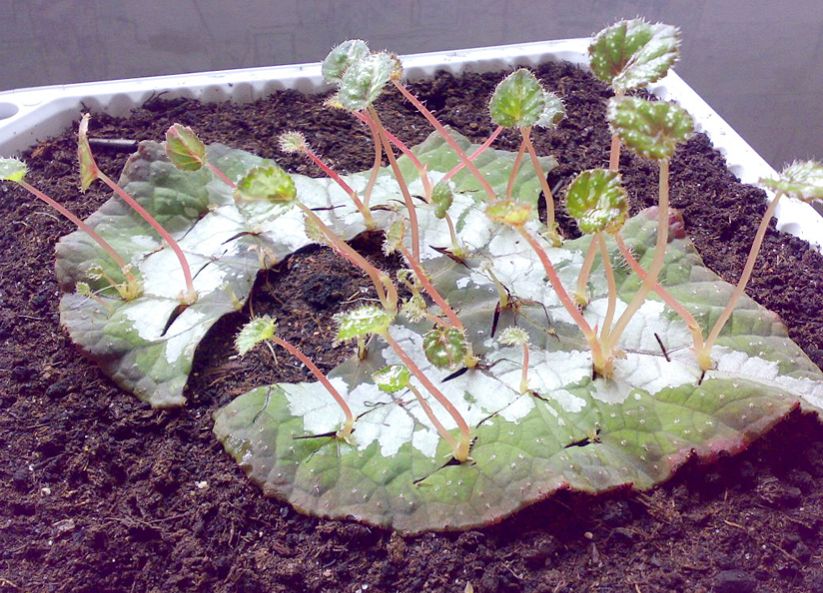
Each of the breeding methods requires a lighter substrate than for a full-fledged plant in order to increase their survival.
Diseases and Care Issues
Any houseplant is weakened by failures in the care of it. Then it becomes a victim of pests, viruses, fungi:
- Of the insects, the spider mite, Drosophila, whitefly, and nematode most often affect begonia. A tick appears when the air in the room is too dry. It sucks juices, stops growth and flowering. It is worth raising the humidity by placing the pot on a pallet with wet pebbles or sphagnum moss, or spraying the air around without getting on the bush.
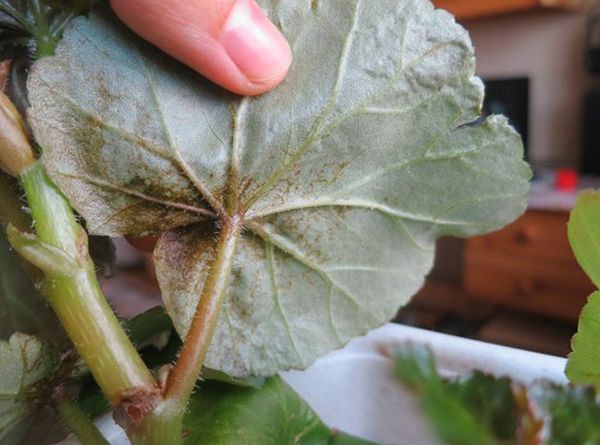
Spider mite - Frogs - the Drosophila fly and the whitefly - on the contrary, settle in the flooded soil, can mow the plant's health together with the fungi. Here it is worth replacing the soil, treating it with an industrial or domestic insecticide made from herbs.
- A dangerous worm is a nematode. It penetrates the stems, leaves, roots, and at first it is impossible to see its activity. Gradually, as the affected area increases, the flower changes, the stems become outgrowths, curves. But then it’s too late to treat it, it remains to destroy and monitor others, since there is a chance of their infection.

Nematode defeat - Gray, black rot, powdery mildew - fellow travelers of too careful watering. In addition to correcting the introduction of water, treatment is necessary: cut off all damaged fragments of the bush and treat it with an antifungal drug.
- Some diseases are incurable, and you need to get rid of begonia in this case, so as not to infect neighboring flowers. Disinfect the pot before further use.
- Sometimes evergreen begonia drops buds. This is usually associated with stress, for example, when changing places. She really does not like this, as well as any drastic changes: in temperature, humidity.

Dropping buds - If the leaves dry, first at the edges, and then completely fall off - this is due to a lack of humidity and heat. The same reason happens when the buds dry and fall.
- The stems are stretched, the whole plant turns pale - it does not have enough sunlight.
- If begonia began to bloom weakly, then there may be several reasons: too much sun, high humidity or a plant is already old. In the latter case, you can replace it by taking the cuttings.
Common questions
Any gardener wants to admire a continuously blooming bouquet at home. To choose an ever-flowering begonia for this is the right decision. But you should first study its living conditions so that the flower is comfortable in the new house.


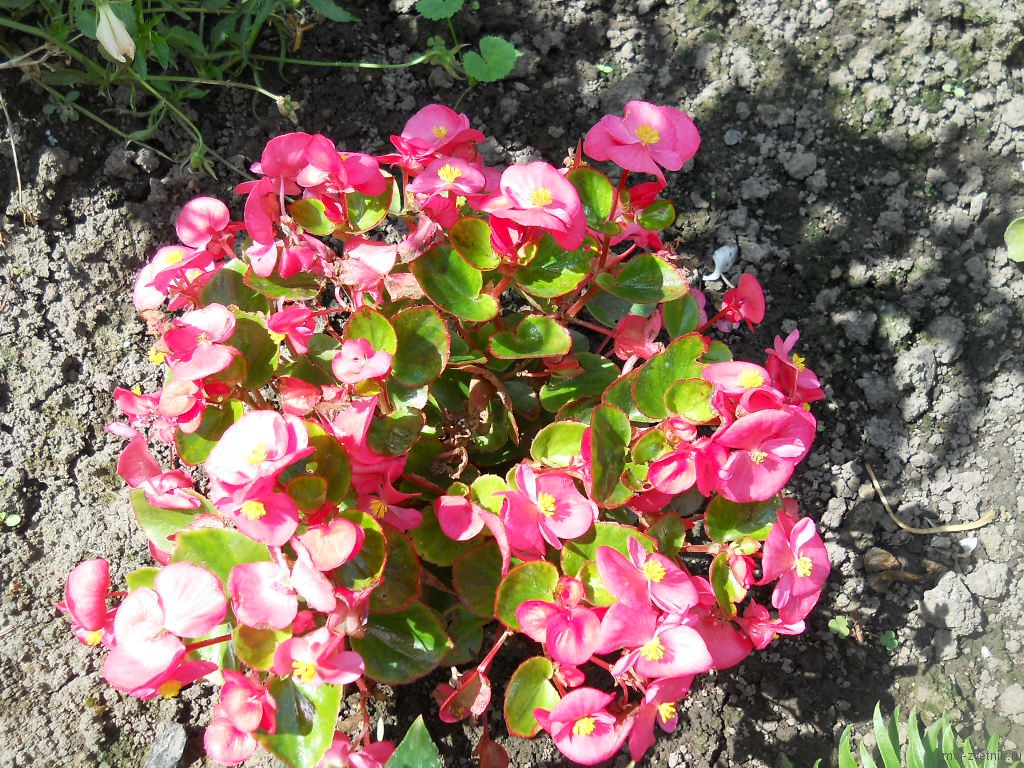
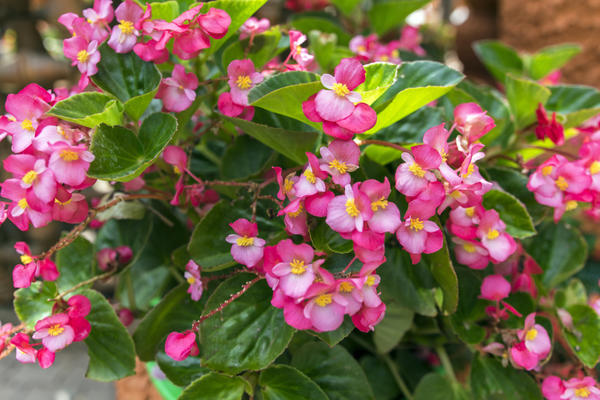




 10 beautiful annuals that bloom all summer
10 beautiful annuals that bloom all summer Sow in the ground, without seedlings: 10 beautiful and unpretentious flowers
Sow in the ground, without seedlings: 10 beautiful and unpretentious flowers Platicodon planting and outdoor care
Platicodon planting and outdoor care Hosta - planting and care in the open ground in the Urals
Hosta - planting and care in the open ground in the Urals